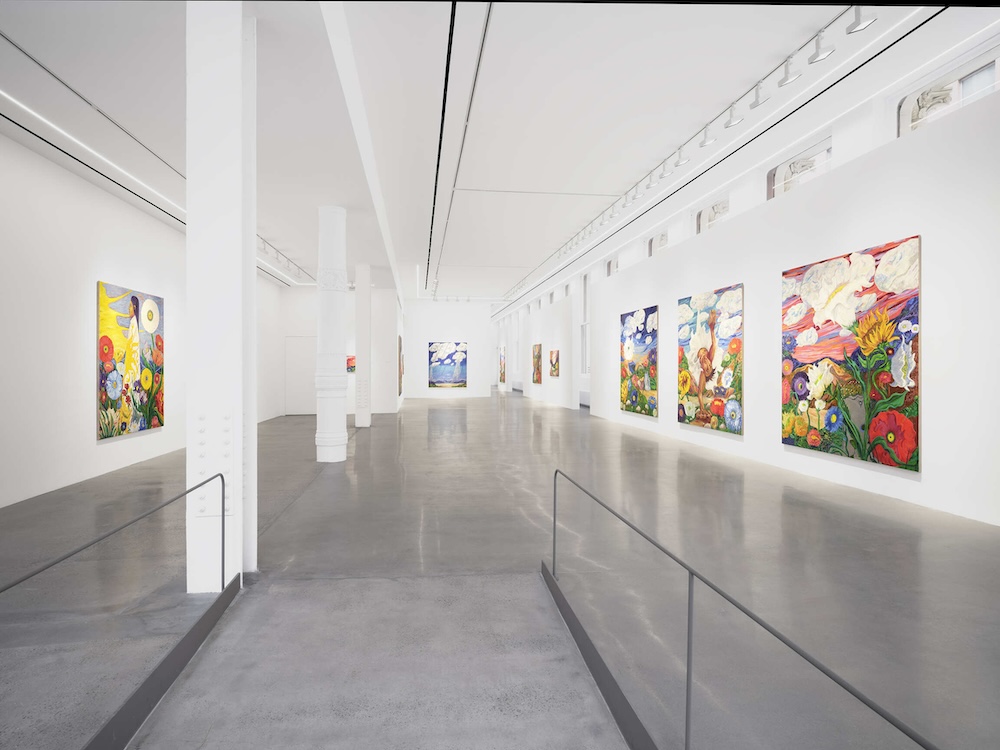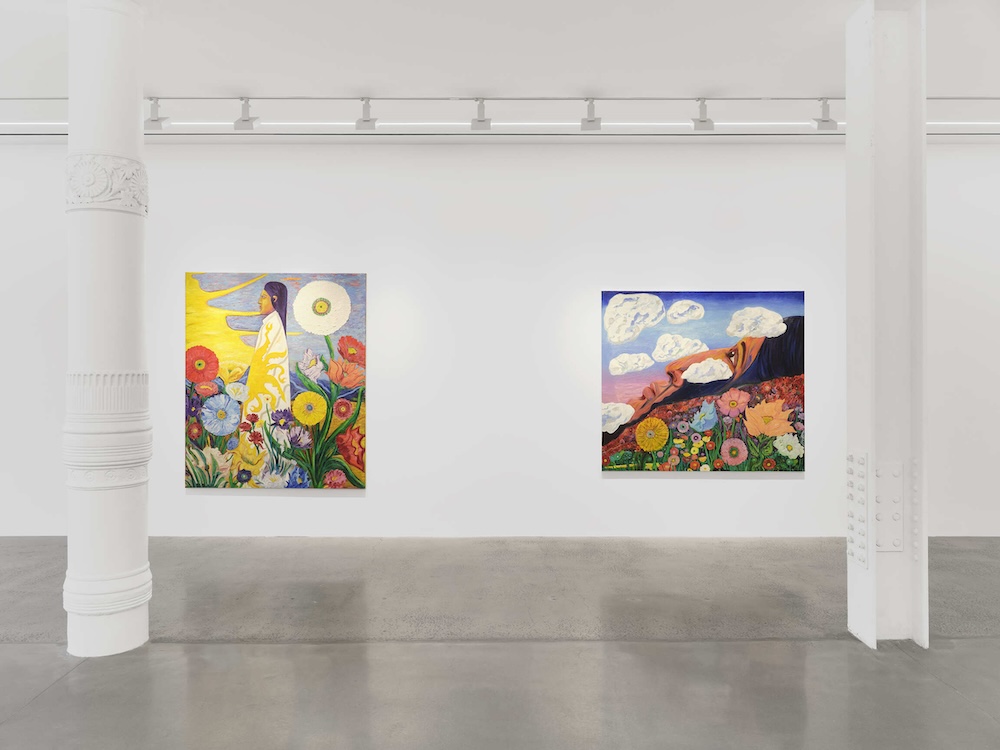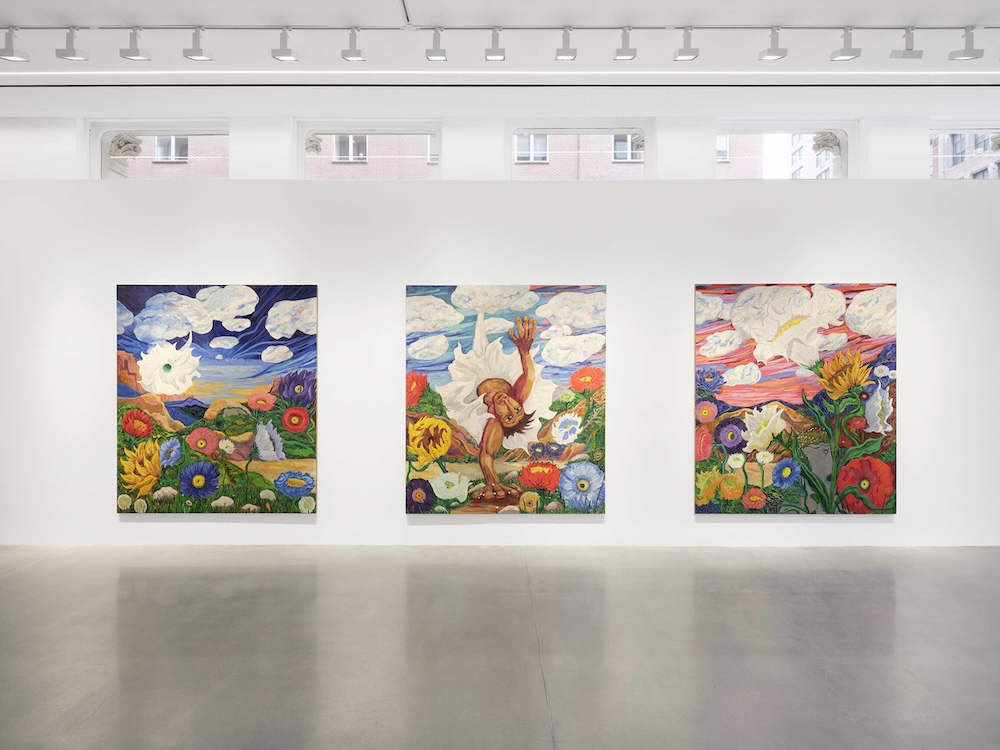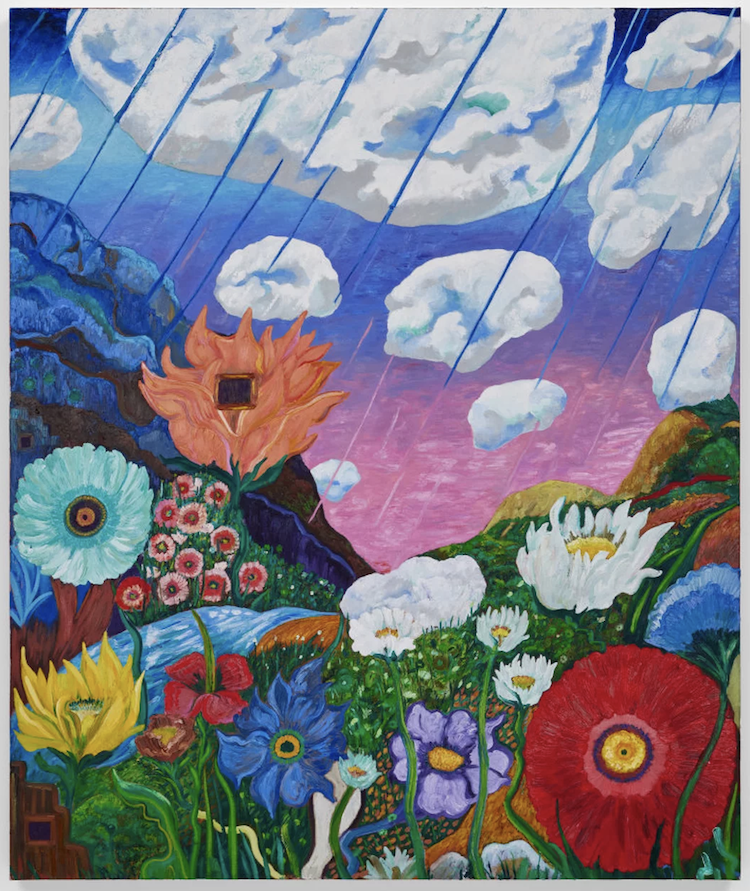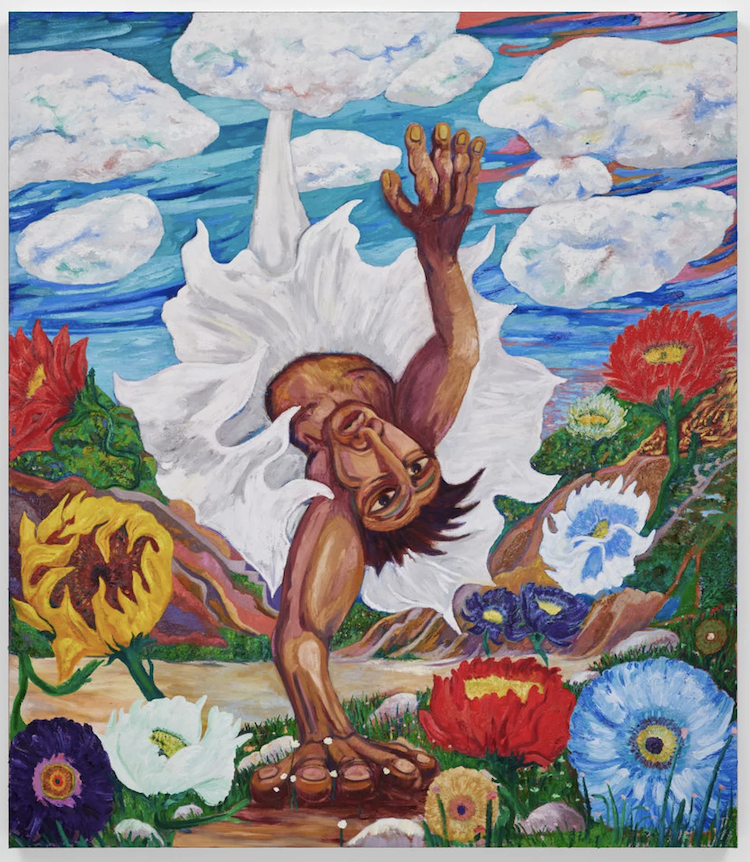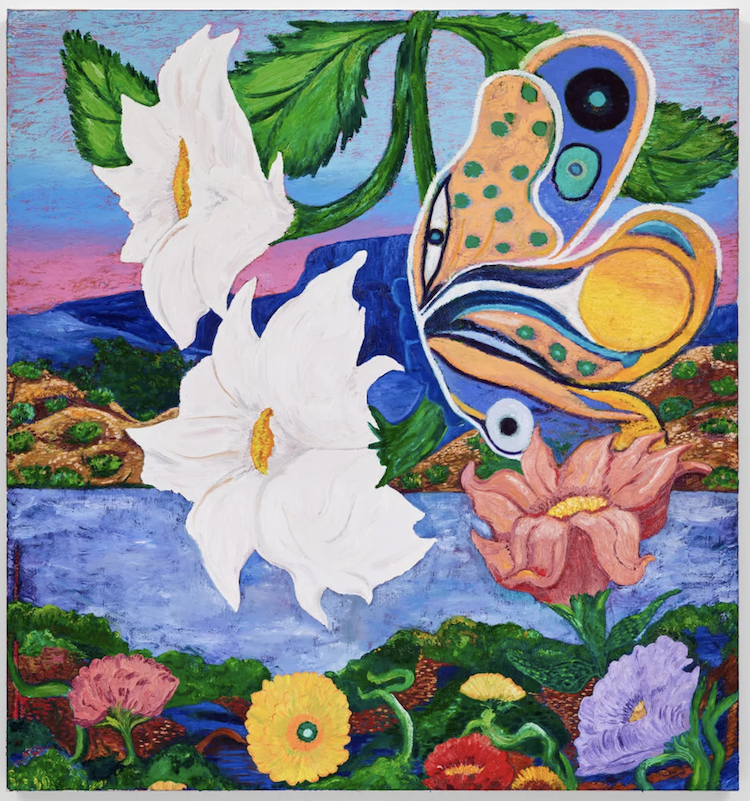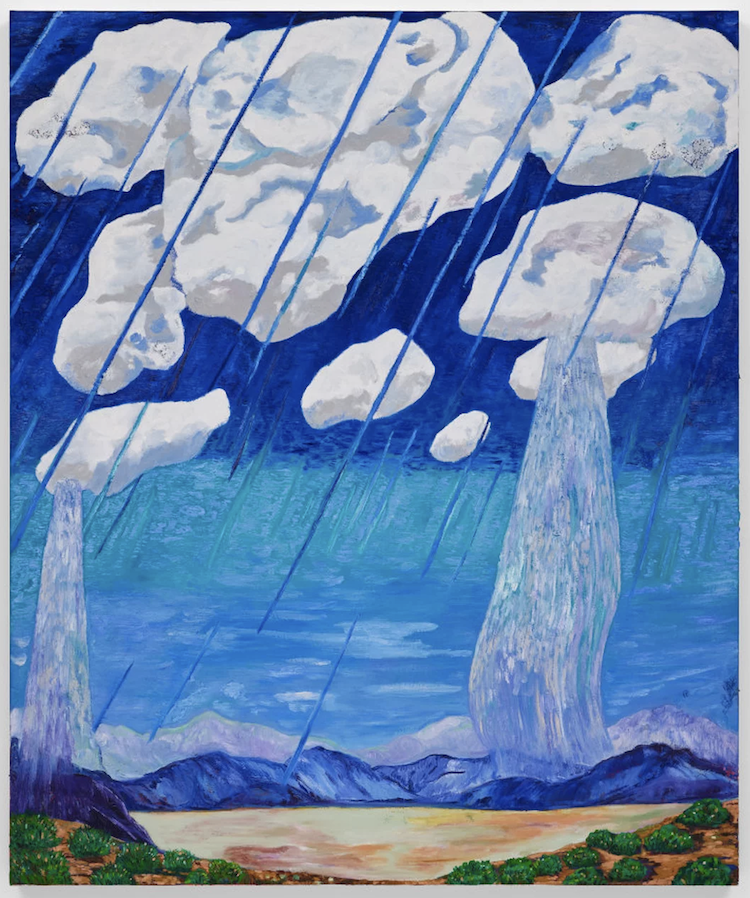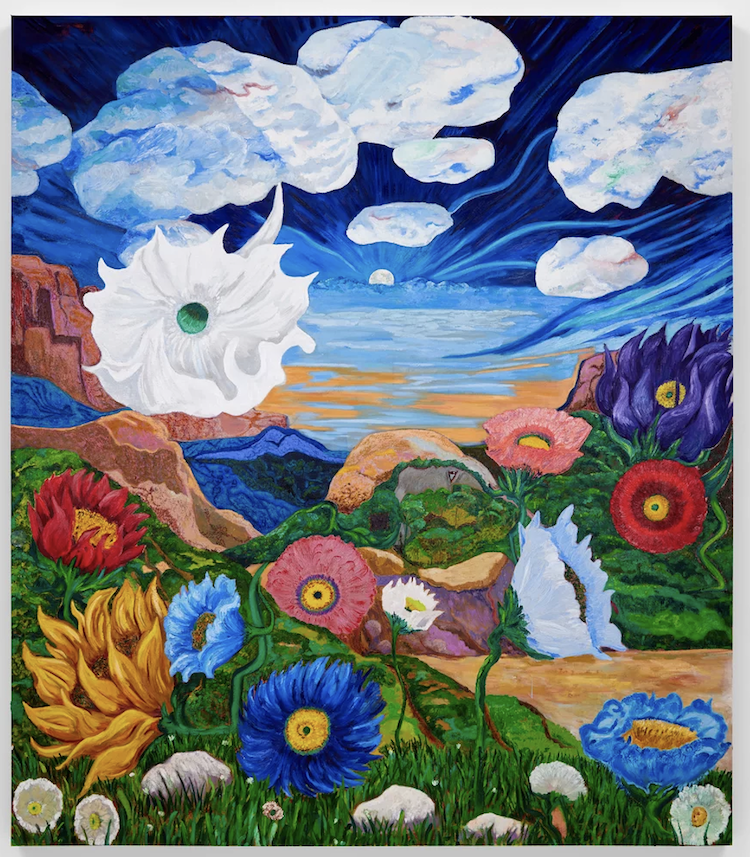Almine Rech New York is pleased to announce Big Sky, Daniel Gibson's third solo exhibition with the gallery, on view through March 2, 2024.
“art, like life, has had to begin all over again, for the very end of the world had been made visible at last. The artist may look safely over an utterly new horizon, which is the only encouragement the artist of today can hope for.” –Marsden Hartley, 1921
When nothing makes sense there is the earth and the sky. A site for the body and a plane for the mind and the soul. While gravity tethers us to the first, it is often that we look up in search of the imagined––a dream, a memory of the dead, an answer to what’s next––but, generally, our gaze rests there where the two meet: at the horizon. It is from this anchor point that Big Sky, Daniel Gibson’s third solo exhibition with the gallery, spins off into a push and pull between the earthly and heavenly realms in a series of new sublime landscape paintings inspired by the high desert of the American Southwest.
Datura, hibiscus, and sunflowers spring up by riverbeds and along the foothills of red rock formations, figures and faces are embedded in the land, and big clouds fill big skies at various times of day. These scenes call to mind how in the presence of so much space above your head and under your feet, you cannot help but feel more a part of the environment––your own presence significantly smaller than in an urban setting. This feeling of relative smallness within the breadth of the universe prevails throughout the exhibition. By way of a threefold use of the landscape genre––as a carrier of personal narratives, art historical dialogue, and, in this body of work, as allegory with deeper conceptual underpinnings––Gibson ultimately grasps at the ontological and ephemeral passage of human life in relation to nature’s regenerative cycle.
As the exhibition title indicates, the sky carries a heavy weight. Almost every painting has thick clouds, real clouds, like those characteristic of New Mexico and Arizona and reminiscent of the works of Marsden Hartley, such as the “New Mexico Recollections” (1922-23) series, and Georgia O’Keeffe’s “Sky Above Clouds IV” (1965). Their liveliness and simultaneously inevitable dissipation culminate in “A Rose For A Friend” (2023) in which one of the clouds takes the shape of a face and light rain has begun to fall. The face, here in the clouds but recurring also elsewhere in the landscapes, represents tender memories of many who have been lost in Gibson’s life. One of the artist’s dear friends, and a lifelong artistic collaborator, passed away in 2019 after a years long struggle with addiction and schizophrenia; in their last visit together, together they looked up at the sky for hours, pointing out figures in the clouds. Now, this friend and others are taken up into the clouds, forever looking over us from this other plane.
Like the formation of rain, Gibson’s landscapes are of cyclical nature. All works posit an emphasis on directionality and re-orientation; quite literally, all works are directed to the left causing for a non-Western, dextrosinistral read. The rain falls from right to left in the title painting “Big Sky” (2023) and “Resting Cloud Catching Rain” (2023), the majority of the flowers stretch and bloom towards the left, a robed figure walks into a setting sun in “Into The Sun” (2023), and the butterfly flies west in “Butterfly Over Rio Chama” (2023). This directionality encourages the viewer’s gaze in a circular motion through the three stages of a landscape: through the earth, the sky, and the horizon––and, if you want, through birth, life, and death. The full circle of this triadic cycle, in which genre and subject fall together, appears fragmented in “Moon Closes Earth’s Jar” (2023), “You Got To Come From Somewhere, You Don’t Just Fall Out Of The Sky” (2023), and “The Flower Is Another Sun” (2023)––a triptych that can equally stand as three individual works. The three canvases show us the moment when dusk falls, when the day’s horizon is temporarily frozen just before night takes over. A moment that, when noticed, transfixes us. A sudden realization of the passing of time and, thus, our mortality. This fleeting feeling is echoed, throughout all of the works, for that matter, by the noticeable wind that rustles the flowers in bloom, not coincidentally, at the apex of their existence before they return to the earth. The triptych, read from right to left, captures a panoramic scene. First, the drama of a setting sun arrests us with its ethereal, fiery colors, next, a figure bursts from a flower grown from the clouds, latching one hand to the ground while reaching the other to the sky, and, lastly, as sunlight extinguishes, we see the moon rise and the horizon disappears into the darkness. Throughout the night, it might then be people from the clouds who hold both planes, heaven and earth, in place. Together, the works in Big Sky, in a unique circuity of both life’s and nature’s cycles, ooze the strength of life at its peak, which appears to be the moment that most accurately understands its inception and end: the horizon of existence. —Lara Schoorl, Founder and Editor of Close Distance



